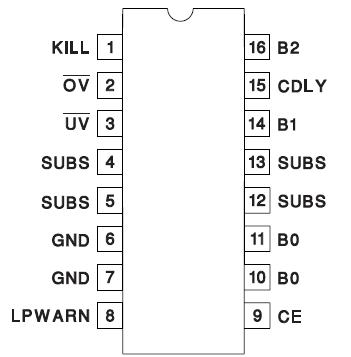UCC3911-1: Features: • Protects Sensitive Lithium-Ion Cells from Overcharging and Over-Discharging• Used for Two-Cell Lithium-Ion Battery Packs• No External FETs Required• Provides Prot...
floor Price/Ceiling Price
- Part Number:
- UCC3911-1
- Supply Ability:
- 5000
Price Break
- Qty
- 1~5000
- Unit Price
- Negotiable
- Processing time
- 15 Days
SeekIC Buyer Protection PLUS - newly updated for 2013!
- Escrow Protection.
- Guaranteed refunds.
- Secure payments.
- Learn more >>
Month Sales
268 Transactions
Payment Methods
All payment methods are secure and covered by SeekIC Buyer Protection PLUS.

 UCC3911-1 Data Sheet
UCC3911-1 Data Sheet








